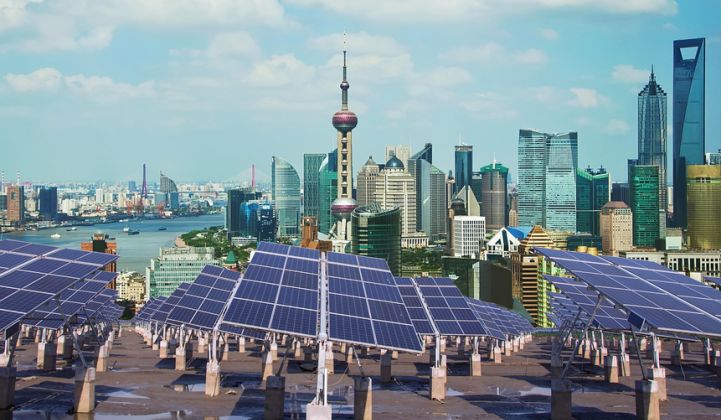In September 2020, China’s President Xi Jinping told the U.N. General Assembly that the country is aiming to be carbon-neutral by 2060.
In December he set a 2030 wind and solar capacity goal of 1,200 gigawatts, up from around 450 GW today. The publication of China’s 14th five-year plan, covering 2021-2025, is expected this month. It will likely include more details on the first stages of this path to net-zero carbon.
On Monday the nation’s grid company released its plan to make this happen.
The State Grid Corporation of China is the world’s largest utility company. As of 2020, it was responsible for the transmission of that 450 GW of installed wind and solar power. Tripling that in a decade will be quite a challenge.
These numbers might seem fantastical — we’re talking terawatts — but evidence, and precedents, suggest they are also achievable. The grid was something of a hindrance to the surge in solar installations when the country’s feed-in tariff was in place, with curtailment a substantial challenge for some provinces. Solar-rich Xinjiang Province, in the country’s northwest, saw curtailment in excess of 30 percent in 2016, according to official data.
That solar surge saw the country’s cumulative installed PV capacity go from 6.5 GW in 2012 to 130 GW in 2017, according to data from the Asia Europe Clean Energy Advisory. That surge was backed by the rapid scaling up of manufacturing, as well as the feed-in tariff. Now it’s happening again.
The top-down 2060 net-zero target combined with the sustainable economics of solar is a potent combination. They're matched with a new wave of manufacturing growth by firms including Jinko Solar and Longi, plus expansions further up the supply chain to the polysilicon producers as well.
The release of the State Grid Corporation’s plans on Monday demonstrates that the country is readying for this growth in earnest.
Building a grid and power market fit for net-zero carbon
The new strategy is wide-ranging. But connecting and efficiently managing this next wave of wind and solar growth is at the heart of it.
That starts with plans for new ultra-high voltage AC grid infrastructure to connect the country’s wind-swept desert regions in the north to the main population centers on the east coast. Curtailment is clearly something that State Grid wants to put in the rearview mirror. That becomes especially pressing when population and economic growth, plus the electrification of heat and transport, combine to boost electricity demand.
A 2018 study by a group of Chinese researchers modeled the growth in electricity from 2020 to 2030 at 64 percent.
EVs will drive a chunk of that demand. Carmakers are required to have a 40 percent share of sales from EVs by 2030. State Grid plans a highway-based smart charging network that will include 176 cities. The combined population of China’s largest 176 cities is more than 950 million, highlighting the potential scale of usage this network might have to cope with by 2030.
In addition to more wires and poles, there is also a concerted effort outlined in the plan to make the grid smarter and more adaptable, as well as to develop a competitive power market to best utilize it.
Priority dispatch for clean energy sources, greater cooperation between regions, and connectivity across the grid to improve data flow and command and control options are also part of the plan. Ongoing reforms will look to establish a national power market. In 2019 only 30 percent of the nation’s electricity participated in market-based trading. Markets for auxiliary grid services, demand response incentives and a route to market for energy storage will all be on the table.
The coal question
The strategy also includes plans to “actively support the flexible transformation of coal power, reduce coal power generation as much as possible and promote the peak of coal consumption as soon as possible,” as well as backing natural-gas capacity for peak-shaving and large-scale energy storage including promoting “PV + energy storage.”
Hand in hand with the growth of renewables is the winding down of coal.
On Wednesday the China National Coal Association said the country’s coal consumption had climbed 0.6 percent during 2020. It expects the economic recovery to drive further growth in 2021 before coal demand peaks this side of 2025.
The 14th five-year plan will likely include more details on the roadmap to that peak.
“The most challenging part of the shift is not the investment or magnitude of renewable capacity additions but the social transition that comes with it," Prakash Sharma, Wood Mackenzie's head of markets and transitions for Asia-Pacific, said after Xi's speech at the U.N. "Halving coal capacity will result in the loss of coal mining jobs, affecting provinces that depend on its revenues and employment generation."
“We expect the government to retrofit coal-fired power plants with [carbon capture and storage] to retain coal-mining activity in key provinces," Sharma said. "This approach aligns with China’s strategy to optimize domestic coal resources to improve energy security."




